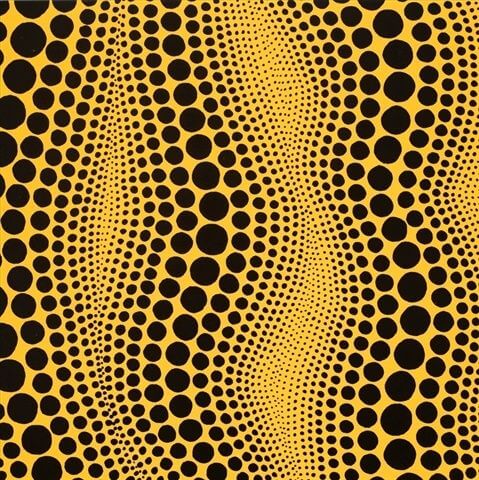- Sale
- NEW ARRIVALS
- Most Popular
- All Prints
-
Artists
-
 ALEC MONOPOLY
ALEC MONOPOLY7 artworks
-
 Alex Katz
Alex Katz133 artworks
-
 Banksy
Banksy4 artworks
-
 Bridget Riley
Bridget Riley1 artwork
-
 Damien Hirst
Damien Hirst475 artworks
-
 Hajime Sorayama
Hajime Sorayama126 artworks
-
 Harland Miller
Harland Miller48 artworks
-
 Invader
Invader72 artworks
-
 Javier Calleja
Javier Calleja2 artworks
-
 Kaws
Kaws105 artworks
-
 Keith Haring
Keith Haring192 artworks
-
 Matt Gondek
Matt Gondek32 artworks
-
 Mr.
Mr.28 artworks
-
 Satoru Koizumi
Satoru Koizumi1 artwork
-
 Takashi Murakami
Takashi Murakami342 artworks
-
 Takeru Amano
Takeru Amano22 artworks
-
 Yayoi Kusama
Yayoi Kusama153 artworks
-
- Sell
-
About

- Sale
- New Arrivals
- Most Popular
- All Prints
- Arists
- Sell
-
About
- the service
- How it Works
- Buy
- What is a print?
- Authenticity Guarantee
- the company
- About
- Contact us
- Login
-
 ALEC MONOPOLY
ALEC MONOPOLY7 artworks
-
 Alex Katz
Alex Katz133 artworks
-
 Banksy
Banksy4 artworks
-
 Bridget Riley
Bridget Riley1 artwork
-
 Damien Hirst
Damien Hirst475 artworks
-
 Hajime Sorayama
Hajime Sorayama126 artworks
-
 Harland Miller
Harland Miller48 artworks
-
 Invader
Invader72 artworks
-
 Javier Calleja
Javier Calleja2 artworks
-
 Kaws
Kaws105 artworks
-
 Keith Haring
Keith Haring192 artworks
-
 Matt Gondek
Matt Gondek32 artworks
-
 Mr.
Mr.28 artworks
-
 Satoru Koizumi
Satoru Koizumi1 artwork
-
 Takashi Murakami
Takashi Murakami342 artworks
-
 Takeru Amano
Takeru Amano22 artworks
-
 Yayoi Kusama
Yayoi Kusama153 artworks

How to Display Art Prints In Your Home
July 10, 2023 5 min read
Acquiring a fine art print is not just an investment; it's also an exciting opportunity to enhance your personal space.
A well-displayed art print can ignite conversation, provide inspiration, and elevate your home's ambiance.
However, hanging an art print isn't as simple as hammering a nail into the wall.
To ensure your print remains as magnificent as the day you acquired it,Hype Museum has created a guide on how to display art prints in your home, so you can proudly display your new art print carefully.
How To Display Art Prints in Your Home: Step By Step
- Choosing the Right Frames: Depending on the style of your art prints, select a frame that complements them. Consider the color, size, and style of the frame. It should protect the print while also enhancing its aesthetic appeal.
- Frame Your Art Prints: Carefully place the art print in the frame. If your art print is a poster or a paper, you may need a mat board to keep it flat and centered in the frame. Be sure to clean the glass inside and out before sealing up the frame to avoid dust particles showing up later.
- Plan Your Layout: Before you start hammering nails into the wall, plan out where and how you want to display your art prints. You could lay them out on the floor to get an idea of how they will look on the wall. Take into account the balance, spacing, and composition. You may want to group smaller prints together or let a larger print stand alone.
- Measure and Mark: Use a measuring tape to measure the exact spot where you want the art prints to hang. This is also the time to decide the height at which the prints will hang. A common rule of thumb is to hang art so its midpoint is between 57 and 60 inches from the floor. Use a pencil to lightly mark the spot on the wall.
- Install the Hardware: Depending on the type of frame, you will either need to attach a wire across the back of the frame or use a sawtooth hanger. If your frame came with a wire or hanger already attached, you can skip this step.
- Hammer in the Nail or Picture Hook: Place the nail or picture hook at the spot you marked on the wall. Use your hammer to carefully hammer it in, making sure it is secure.
- Hang Your Art Print: Hang your art print on the nail or picture hook. Use a level to ensure it's not tilted.
- Adjust if Necessary: Stand back and look at your work. If the art print is not level or if it is not positioned as you had hoped, don't be afraid to adjust it.
How To Display Art Prints in Your Home: Additional Tips
Choosing the Perfect Spot
Finding the right location for your art print is the first step towards proper display and care. Consider the scale and orientation of your print when choosing where to hang it. A large piece might command attention on a spacious wall, while a smaller one might fit better within a group of prints. Your print should not be overcrowded by furniture or other artworks. It should also hang at eye level, typically 57 to 60 inches from the floor to the center of the art.
Beyond size considerations, environmental factors are crucial. Avoid placing your art print in direct sunlight. Ultraviolet rays can cause colors to fade over time, damaging your artwork. Similarly, avoid areas with high humidity, such as bathrooms or kitchens, as moisture can warp the paper and lead to mold growth.
Framing Your Art Print
Framing is a critical element in art print preservation. It serves two purposes – aesthetically enhancing your artwork and protecting it from external harm. Seek a professional framer who understands the delicate nature of art prints.
Insist on UV-protective glass or acrylic for your frame. This will help shield your print from harmful light rays, ensuring the colors remain vibrant. Opt for acid-free matting and backing materials to prevent yellowing or staining over time. Archival, or conservation framing, will help keep your print in pristine condition for the years to come.
The Art of Hanging Art Prints
When it comes to hanging your art print, precision and care are crucial. Consider using two wall hooks per frame rather than one. This provides better support for the frame and prevents it from becoming crooked over time. Use a level to ensure your print is hung straight. It's also wise to use wall anchors when hanging larger prints, especially in drywall, to ensure the piece remains securely in place.
Ensure you don't hang your art prints near heat sources such as radiators or fireplaces. Fluctuations in temperature can cause expansion and contraction, leading to damage over time.
Regular Care and Maintenance
Like any other cherished possession, your art print requires regular care. Lightly dust your framed prints using a soft cloth or a feather duster. Never use cleaning products or water, as these can damage the print and frame.
It’s advisable to occasionally rotate the art displayed in your home. Not only does this offer protection from prolonged exposure to environmental factors, but it also keeps your home décor fresh and interesting.
The Influence of Lighting
Lastly, let’s touch on lighting, an often overlooked but important aspect of art display. While direct sunlight is a concern, displaying your print in a well-lit area helps accentuate its colors and details. The key is to use controlled, indirect light. You might want to consider installing picture lights or using adjustable track lighting. Just remember to use LED lights, which emit little to no UV radiation and are safer for artwork.
How to Display Art Prints Without Frames
While framing is a common practice for preserving and showcasing art prints, it isn't the only way to display your new acquisitions.
If you're seeking a more relaxed or modern aesthetic, displaying your print without a frame can be a stylish alternative. Here are some creative methods for presenting your art print sans frame.
Art Clips
Art clips are a trendy, minimalistic way to hang prints without a frame. They come in a variety of designs and materials, including metal, plastic, and wood.
Simply clip them to the top and bottom of your print, and then hang on a nail or hook. This method keeps your print flat against the wall while letting every edge of the artwork shine.
Picture Rails
Picture rails provide a sleek and versatile way to display art prints. Mount the rail on your wall and use art-friendly adhesive or specialized clips to hang your prints.
This technique not only protects your print from pinholes but also allows you to easily change and rearrange your artwork as you wish.
Print Hangers
Print hangers, or poster hangers, are an attractive, easy-to-use option. These are typically two pieces of wood or metal that clamp together at the top and bottom of your print using magnets.
A cord or wire extends from the top bar for hanging. This method secures your print without damaging it and is especially suitable for larger prints.
Washi Tape
Washi tape is a Japanese masking tape known for its versatility and array of designs. If you’re going for a casual, eclectic vibe, you can use washi tape to adhere your print to the wall.
Apply the tape along the edges or corners of your print for a border effect. Just remember to choose a tape that's safe for walls and prints alike.
Conclusion
In conclusion, displaying and caring for your art print involves careful consideration of various elements, from location and framing to lighting and maintenance.
Following these guidelines will ensure that your investment remains protected, and your home remains visually enriched by the artwork you love.
Enjoy the journey of showcasing your Hype Museum print, and here's to many years of artful pleasure.
Leave a comment
Subscribe
Sign up to get the latest on sales, new releases and more …




















